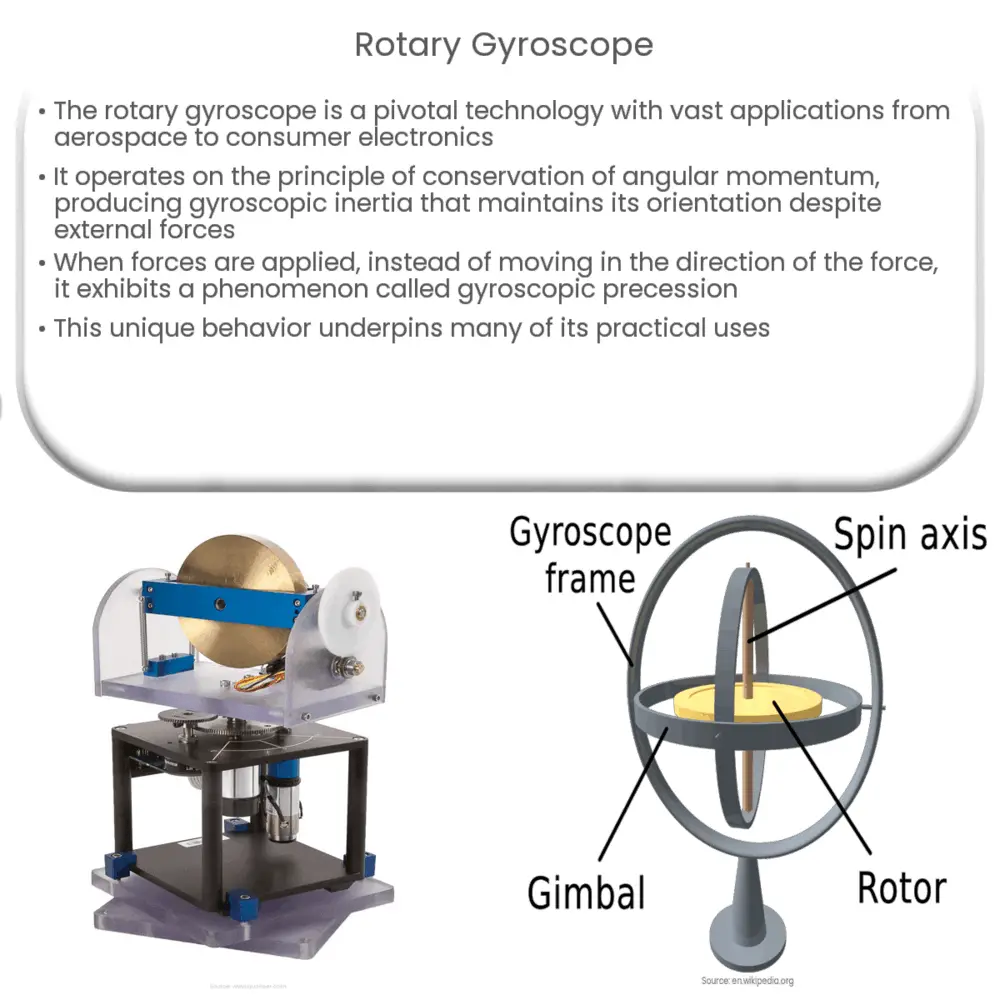When an external force is applied to a spinning gyroscope, it will not move in the direction of the applied force, but will instead “precess,” or rotate around an axis perpendicular to the force. This counterintuitive behavior is known as gyroscopic precession, and it forms the basis of many practical applications of the rotary gyroscope.

Understanding the Rotary Gyroscope: Principles, Applications, and Future Trends
Introduction
The rotary gyroscope is an ingenious device with a myriad of applications in various fields, from aerospace engineering and navigation to consumer electronics. This remarkable piece of technology has played a crucial role in shaping our modern world, making possible advancements in areas such as aviation, marine transportation, and space exploration. In this article, we will delve into the principles behind the rotary gyroscope, its diverse applications, and the future trends that may shape its evolution.
Principles of the Rotary Gyroscope
The rotary gyroscope is a spinning wheel or disk mounted on an axis that allows it to rotate freely in multiple directions. The core principle behind its operation is the conservation of angular momentum, which is a fundamental concept in classical mechanics. As the wheel spins, it generates a force called gyroscopic inertia, which resists changes in the wheel’s orientation. This inertia allows the gyroscope to maintain its orientation in space, regardless of external forces acting upon it.
When an external force is applied to a spinning gyroscope, it will not move in the direction of the applied force, but will instead “precess,” or rotate around an axis perpendicular to the force. This counterintuitive behavior is known as gyroscopic precession, and it forms the basis of many practical applications of the rotary gyroscope.
Applications of Rotary Gyroscopes
Understanding the Rotary Gyroscope: Principles, Applications, and Future Trends
Introduction
The rotary gyroscope is an ingenious device with a myriad of applications in various fields, from aerospace engineering and navigation to consumer electronics. This remarkable piece of technology has played a crucial role in shaping our modern world, making possible advancements in areas such as aviation, marine transportation, and space exploration. In this article, we will delve into the principles behind the rotary gyroscope, its diverse applications, and the future trends that may shape its evolution.
Principles of the Rotary Gyroscope
The rotary gyroscope is a spinning wheel or disk mounted on an axis that allows it to rotate freely in multiple directions. The core principle behind its operation is the conservation of angular momentum, which is a fundamental concept in classical mechanics. As the wheel spins, it generates a force called gyroscopic inertia, which resists changes in the wheel’s orientation. This inertia allows the gyroscope to maintain its orientation in space, regardless of external forces acting upon it.
When an external force is applied to a spinning gyroscope, it will not move in the direction of the applied force, but will instead “precess,” or rotate around an axis perpendicular to the force. This counterintuitive behavior is known as gyroscopic precession, and it forms the basis of many practical applications of the rotary gyroscope.

